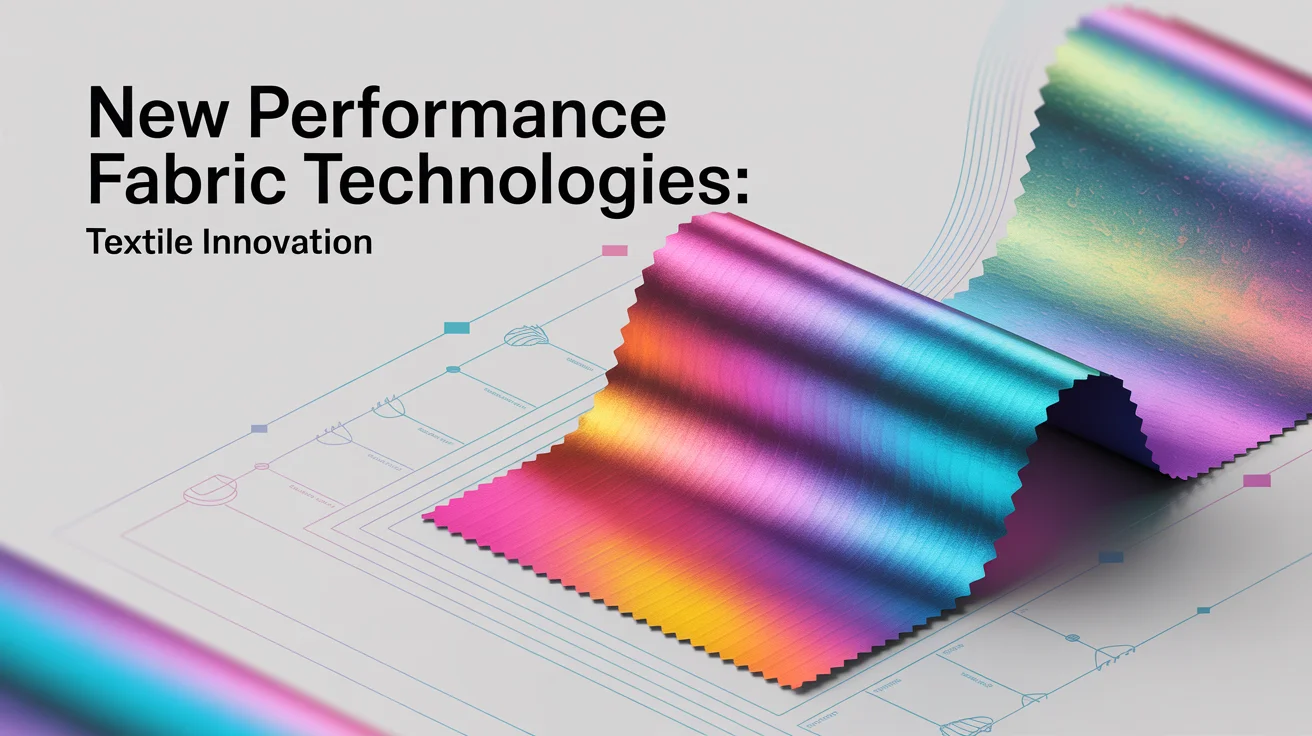The textile industry is evolving fast, and one of the most exciting changes is the rise of new performance fabric technologies. These advanced fabrics go beyond traditional materials, offering durability, breathability, moisture control, and even smart functions like temperature regulation.
With sustainability and comfort as top priorities, performance fabrics transform how we dress, exercise, and live.
These innovations, from athletic wear to outdoor gear, make clothes smarter, lighter, and more functional.
In this blog post, we’ll explore the latest advancements setting new standards in textile design and innovation.
Graphene-Infused Textiles
Graphene is one of the most promising materials in the world. When used in textiles, it brings incredible strength and thermal conductivity. Clothing made with graphene fabric can regulate body temperature, making it ideal for athletes or extreme environments.
This technology also increases the durability and flexibility of fabrics. It allows clothes to last longer while remaining lightweight and comfortable.
Phase Change Materials (PCMs)
Phase Change Materials regulate temperature. They absorb, store, and release heat as the body needs it. These materials are embedded in fabrics to provide a cooling or warming effect depending on the environment.
PCMs are particularly useful in sportswear, military gear, and even bedding. They keep your body in a thermal comfort zone, improving performance and sleep quality.
Recycled Performance Fibers & Sustainable Materials
Sustainability is at the heart of many new performance fabric technologies. Brands use recycled ocean plastics, PET bottles, and organic waste to make high-performance fibers. These eco-friendly fabrics offer the same durability and flexibility as traditional ones, but without harming the environment.
They also help reduce waste and carbon emissions. As a result, many sportswear and fashion companies are switching to these materials to meet consumer demand for sustainability.
Key Benefits of Recycled Performance Fibers:
- Reduce reliance on virgin plastics and raw materials
- Lower environmental impact and carbon footprint
- Maintain high elasticity, breathability, and strength
Self-Cleaning Fabrics Using Nanotechnology

One of the most futuristic performance fabric technologies involves nanotechnology. These fabrics can clean themselves by breaking down dirt, bacteria, and odors using microscopic titanium dioxide or silver particles coated on them.
They reduce the need for frequent washing, which saves water and energy. More importantly, they remain fresh and odor-free for extended periods, making them perfect for daily wear, travel, and active lifestyles.
Smart Fabrics with Integrated Sensors
Smart textiles are revolutionizing health and fitness tracking. These fabrics have sensors that monitor heart rate, respiration, muscle activity, and posture. The data collected is then sent to connected devices for analysis.
They’re used in everything from compression shirts for athletes to wearables for patients in remote healthcare monitoring.
Water-Repellent and Stain-Resistant Coatings
Modern performance fabrics often have hydrophobic (water-repellent) and stain-resistant coatings. These coatings are typically made from environmentally friendly materials and do not affect the fabric’s softness.
They’re ideal for outdoor apparel, kids’ clothing, and uniforms where messes are common and performance matters.
Advantages of Water-Repellent Coatings:
- Keeps you dry in rain or snow
- Prevents stains from setting in
- Increases the lifespan of garments
UV-Protective Fabrics for Outdoor Safety
Fabrics with UV-blocking technology are gaining popularity, especially in outdoor gear and summer wear. These textiles are engineered to block up to 98% of harmful ultraviolet rays, protecting the skin from sunburn and long-term damage.
The technology doesn’t wash out over time, making it a lasting solution for sun protection.
Moisture-Wicking and Quick-Dry Technologies
Moisture-wicking technology helps fabrics pull sweat away from your skin, keeping you dry and comfortable. These fabrics dry quickly and prevent odor buildup, making them a staple in sports and gym wear.
They also reduce the risk of chafing and skin irritation, even during high-intensity workouts.
Stretchable and Shape-Retaining Fibers
New elastomeric fibers can stretch significantly without losing their original shape. These fabrics are used in yoga pants, compression wear, and fitted garments. They provide unrestricted movement while maintaining a snug, supportive fit.
They are especially beneficial for athletes, dancers, and anyone looking for high comfort in daily wear.
Thermal Imaging and Body Mapping Fabric Design
This advanced technology uses infrared thermal imaging to study how the body heats during activity. Designers use this data to create fabrics that provide ventilation and insulation where needed. This body-mapped design improves comfort and energy efficiency.
It’s increasingly seen in high-performance athletic wear and technical outdoor clothing.
Features of Thermal and Body-Mapping Fabric:
- Enhances airflow in high-heat areas
- Adds insulation in cold zones
- Optimizes comfort during activity
Future of Performance Fabrics: Smarter, Safer, Greener
The future of new performance fabric technologies lies in merging comfort with innovation. Researchers and manufacturers continue to push boundaries as demand grows for smart, sustainable, and multifunctional clothing.
These fabrics meet today’s needs and prepare us for tomorrow. Whether it’s adaptive climate control, sustainable sourcing, or built-in tech, the textiles of the future will be as intelligent as they are comfortable.
Conclusion:
The rise of new performance fabric technologies is reshaping how we think about clothing. These innovations, from sustainability to smart sensors, set a new standard for functionality, comfort, and durability.
As these fabrics become more accessible, they transform sportswear and everyday life, bringing a perfect blend of performance and practicality to your wardrobe.
Frequently Asked Questions:
What are performance fabrics made of?
They are usually made of polyester, nylon, spandex, or other advanced blends with added technology like nanocoatings or sensors.
Are performance fabrics safe for sensitive skin?
Many of them are designed to be hypoallergenic and breathable, making them safe and comfortable.
Can I wash clothes made from new fabric technologies?
Most can be machine washed, but smart or sensor-integrated fabrics may require special care. Always check the label.
Do these fabrics lose effectiveness over time?
Some coatings may wear off with multiple washes, but most modern technologies are designed for long-lasting performance.
Are eco-friendly performance fabrics as effective?
Yes, recycled or plant-based fabrics can be as strong, flexible, and breathable as traditional materials.




